| Weight: |
lbs.
|
|
Body fat percentage (optional):
|
%
|
|
Daily activity:
|
Usage Instructions
Are you trying to lose weight? This calculator will help you determine a daily caloric intake for your desired goal.
First input your gender, height and weight. Then choose a daily activity level from the available pull-down menu. Enter how much you'd like to lose and a time period that you would like to achieve your goal during.
Press CALCULATE, and you’ll see estimated calorie requirements for losing weight, as well as a number for maintaining.
The above should give a fairly accurate calorie number for gaining or losing weight, but to get a most accurate Total Daily Energy Expenditure (TDEE), get your body composition tested and enter your stats in the "body fat percentage" field.
Please seek the help of medical & nutritional professionals before drastically altering your exercise or diet.
SUGAR: The Bitter Truth
Here is the backstory on the following fantastic educational video which explains why sugar is so horrible for your health.
Sugar & other fast acting carbohydrates spike your blood sugar level, which in turn leads to your blood sugar level later crashing & thus making you hungry again sooner. No matter how hard you work out, it is hard to lose weight if you have metabolic syndrome & are resistant to leptin. You can't outrun your fork & it is hard to get your fork under control if you are leptin resistant.
People tend to eat more calories when their diets contain processed foods:
His studies suggest that a dramatic shift in how we make the food we eat—pulling ingredients apart and then reconstituting them into things like frosted snack cakes and ready-to-eat meals from the supermarket freezer—bears the brunt of the blame. This “ultraprocessed” food, he and a growing number of other scientists think, disrupts gut-brain signals that normally tell us that we have had enough, and this failed signaling leads to overeating. ... An estimated 58 percent of the calories we consume and nearly 90 percent of all added sugars come from industrial food formulations made up mostly or entirely of ingredients—whether nutrients, fiber or chemical additives—that are not found in a similar form and combination in nature.
9 Quick & Easy Tips to Lose Weight 
- Set Practical Goals: Short term weight changes are typically driven primarily by water weight. For most people it is hard to lose more than 1 to 2 pounds per week. Trying to lose weight too quickly can lead to serious health issues.
- Quick Rule of Thumb on Weight & Calories: Each pound is equivalent to 3,500 calories, so a 500 calorie daily deficit would lead to losing 1 pound per week.
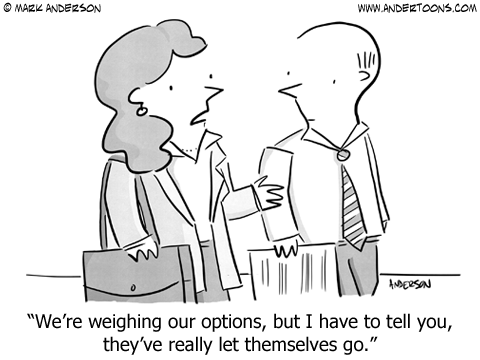
- Beware of Sugar: Your body processes carbohydrates differently than fats and proteins. Eating foods with a high glycemic index (those heavy in sugar and other quick-acting refined carbohydrates) will cause your blood sugar to quickly spike then crash, making you hungry again sooner. Whereas fats and proteins are processed slower and give you a sense of satiety which lasts longer. Calorie counting doesn't work for most people because it requires too much time, effort, and discipline. Eating vegetables and foods with a higher fat and protein content and less carbohydrates means you shouldn't need to count calories, as your body won't tell you that you are hungry when you don't need food. There are literally sugar candies in grocerie stores which are marketed using the label "a fat free food!" The "low fat" healty food marketing gimmicks came out of large agribusinesses creating demand for their frankenfood products.
- Skipping & Binging: If you skip meals it often leads to binging later at night.
- Diet & Excercise: Most of what drives weight gain or weight loss is what you eat, but it is hard to function by cutting calories excessively. If you have reduced your calories to 1,200 per day, then rather than trying to reduce calories further it is better to try to increase calorie expenditure. Exercising will both make you feel better and make it easier to sleep at night.
- Sleep Well: If you don't get enough sleep you may crave more food to offset the lack of sleep.
- Measure it: If you want to improve something, measure it. While a pedometer can seem utterly arbitrary, wearing one and holding yourself to a daily goal can lead to forming powerful habits. Fitbit devices also allow you to create an online account where you can track yourself against friends and co-workers, so you can push each other to exercise. The nice thing about measuring exercise rather than weight is weight is a lagging and fluctuating indicator, whereas you can see each day you did your daily exercise.
- Make it Fun: If exercise is boring, not fun, and/or painful most people won't keep at it. This is why losing weight and joining a gym are common new year's resolutions which are quickly forgotten by February each and every year. Make exercising easy, convenient and fun and you will keep at it.If walking or something simple like that is too boring, consider adding an MP3 player and listen to songs or podcasts, or add some other form of entertainment into your mix.
- Anything is Better Than Nothing: If you can't do high impact stuff, then start with lower impact exercises. If you don't have much endurance, then exercise in shorter increments and gradually increase them over time.
How to Lose Weight and Keep It Off
Losing weight isn't just diet and exercise, it's a lifestyle change. Rather than following fad diets or hoping for a quick fix, losing weight in a healthy, lasting manner is much more likely with careful diet change and the right exercise regimen. Lifestyle and habit changes don't happen in a day, but because of the amount of effort that goes into making those changes, you're more likely to develop habits that give you lasting results.
This step-by-step guide takes a look at how to alter your eating habits and your workout habits to maximize your weight loss most effectively. Identifying bad habits and working hard to change them over time is key to both weighing less and remaining at a healthy weight once you've reached that goal. On top of breaking bad habits, learning healthy habits and implementing lifestyle changes will improve your weight and your overall health.
Creating a Healthy Diet
Changing How You Eat
Losing weight and eating healthy foods go hand-in-hand, and if most of your grocery store purchases are prepackaged or prepared foods, you might be consuming food additives that aren't doing your waistline any favors. The best way to avoid this is to stick to as many whole, unprepared ingredients as possible and to cook your food at home. That way, you know what's going into your meals.
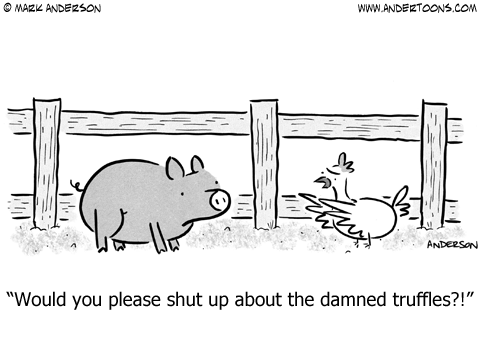
However, many people lead busy lifestyles, and if you don't have time to prepare every meal at home, start reading ingredient labels. Don't just stop at the calorie count because harmful additives may be hiding in ingredient lists. One of the worst culprits for weight gain is trans fat, and you have to be diligent when looking out for it. The nutrition information may say 0 grams trans fat, but if a food contains 0.49 grams or less, the company is allowed to list it as 0 grams. Look for partially hydrogenated oils in the ingredients, and put the food back if you see that ingredient. Look for hidden sugar as well. Fructose, Dextrose, and Sucrose are all sugar ingredients that add up quickly.
Reading ingredients and preparing food at home might seem exhausting, and it isn't easy at first to adjust. Many have lost weight temporarily on fad diets, and it may be tempting to buy diet food instead of preparing your own. However, fad diets are focused on quick weight loss, not long-term solutions and weight management, so many people gain the weight back when the diet is over. You also may be causing holes in your nutrition by cutting out certain foods completely without ensuring that you replace the vitamins elsewhere. Losing weight and staying slim is a lifestyle change, and fad diets just don't cut it.
Many people who struggle with weight gain & sugar cravings have issues with how carbohydrates spike their blood sugar & later cause it to crash. Fats are metabolised slower than sugar, which extends the perception of satiety - vastly different than the sugar roller coaster.
Dr. William Davis wrote a popular book series and blog dedicated to spreading the message about how grains are a problematic caloric source.
Developing Healthy Habits
One source of fatigue from altering one's diet is trying to cut out too many favorite foods at once. You can develop a taste for healthier foods and lose your sugar cravings, but it's not going to happen overnight. While it might be tempting to raid the pantry and throw out everything that's bad for you, that's not the way to create lasting habits.
Instead, slowly cut out one bad food at a time as you introduce new, healthier options into your lifestyle. One great way to do this is to "crowd out" the bad foods with the good. Focus on getting your daily vitamins and nutrients, and fill up on those foods first. You may find that you're not hungry enough for a snack later, and even if you are, you've already met your day's nutrition goals.
Realizing that eating unhealthy food is a bad habit, like smoking or biting your nails, will help you break the cycle. Going cold turkey on favorite snack foods isn't possible for everyone, and if you relapse and chow down on some chocolate, the first step is to forgive yourself for the lapse. Identify the times of day or the activities you engage in that tempt you to reach for the junk food. Being aware that it's going to happen will help you stave off the cravings and gives you the chance to substitute in a healthier option. Don't be afraid to let your friends and family know what you're doing so they can support and cheer you on, and so they can help you avoid cravings.
Portion Control
Nobody likes counting calories, but it's no secret that portion control is one of the key factors in losing weight. Changing your diet doesn't have to revolve around calorie counting, however. Other methods of portion control exist to help you manage how much you eat in a day.
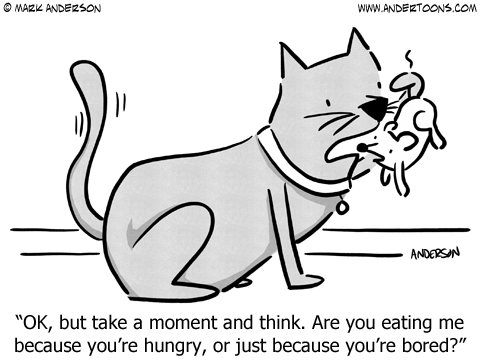
This may at first seem counter-intuitive, but don't skip meals. When you skip a meal, you're likely to eat more later because of how hungry you become. Instead, make sure you eat at least three meals a day, and try not to go more than five hours between meals. Some people have more luck eating smaller meals throughout the day, but you have to be careful with this trick. It's not an excuse to eat a full meal five times instead of three times a day. Instead, you eat very small portions of healthful foods every few hours to keep yourself from getting hungry and grabbing a bad-for-you snack.
The size of your plates and bowls may also have a lot to do with portion control. If you have large dinner plates, the temptation is there to fill them up. Try dining from a side plate instead, and eat slowly so your body has a chance to register that you're no longer hungry. Measuring cups are also useful. If you want a snack, allow yourself half a cup. Measure it into a bowl and don't refill. It's a lot easier to manage portions when you measure them.
If you're still feeling confused about how to manage your portions and how much of which types of food you should eat, a nutritionist can help. A nutritionist will give you information specific to your body and your dietary needs. Nutritionists are also great for telling you what foods you should absolutely cut out all together and where you might have room to cheat a little for favorites once in a while. They can also direct you on moderation. Dark chocolate and red wine, for example, have health benefits when consumed in moderation, even though chocolate and alcohol in general aren't very conducive to dieting. If you spike your blood sugar then when it crashes you will once again be hungry quickly. This is one of the reasons many nutritionists recommend low glycemic index diets with limited carbohydrate consumption.
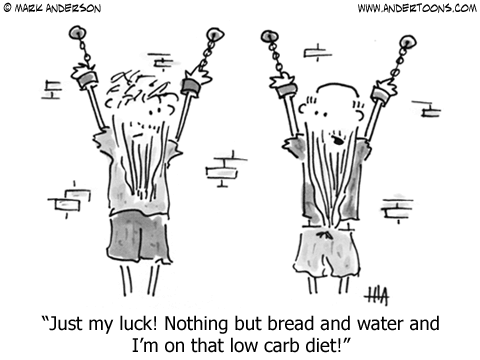
Write it Down
A food journal is much more than just recording what you ate in a day. Food journals help people see how much they're truly eating, and identify any patterns that lead to overeating or snacking on unhealthy foods. You may want to organize your food journal into a graph or a table, or simply record everything diary-style. Just like with your diet, think of writing in your food journal as one of the healthy eating habits you need to pick up.
Write what you ate (including seasonings, garnishes, and sauces,) and how much of it you had. Record the time, the place, the company you kept, and how you were feeling at the time. You also might want to include if you were engaging in any activity, like working at your desk while you had lunch. This is a great way to see where your main concerns lie. You might be snacking too much in mid-afternoon, or running for fast food when on a time crunch at work. Though it might seem tempting to skip this step, especially if you think you can already identify your bad habits, try it out anyway. Putting down every detail will most likely illuminate areas ready for improvement you didn't know existed.
Mastering an Exercise Regimen
Pick a Venue
One of the great things about gyms is trial memberships. You do not have to join the first gym you try, and you want to find somewhere you're comfortable returning to. Different gyms have different atmospheres, and feeling comfortable while you work out is important. Take advantage of trial memberships, single-visit fees, or free classes to try out your options before you settle on something.
Some people prefer to work out with help. Taking a weekly cardio class or hiring a personal trainer are two great ways to keep yourself on track. If you've never been to the gym before, you should start with a personal trainer. Trainers will help you develop an exercise regimen that works for your body and your weight loss goals. They also explain how to use the machines, how long you want to stay with each one, and how to vary your workouts. Lastly, trainers will motivate you as you work out and will push you to do more than you may have thought yourself capable of.
You may not be the kind of person who can work out in the gym. Not everyone likes that atmosphere, and thankfully, you have plenty of options when it comes to getting exercise that don't involve running on the treadmill. If you're a fan of the water, try swimming laps instead. This is great for people who have joint pain or bone issues, as it doesn't put pressure on the limbs. Join a sports team, take a dance lesson, or join a hiking group. If you've ever dreamed about adding a physical hobby to your life, now is the time to do it.
Slow and Steady
When the pounds start coming off, some people are tempted to increase their amount of gym time to accelerate weight loss. Don't give in. As with your dietary changes, working out is a lifestyle change, and those don't happen in a week. While it is possible to increase the amount of time you spend at the gym, you don't want to do it all at once.
Over-exercising can actually cause adverse health-effects. Someone who goes from zero physical activity to two hours at the gym, four times a week is at risk for serious injury. A pulled muscle, a torn tendon, broken bone, or any number of things can happen if you push yourself too hard too fast. Then, instead of moving forward with your exercise routine, you'll be facing weeks of healing time, which can be discouraging if you set specific goals for yourself. Gretchen Reynolds' The First 20 Minutes is a great starter guide to healthy exercising.
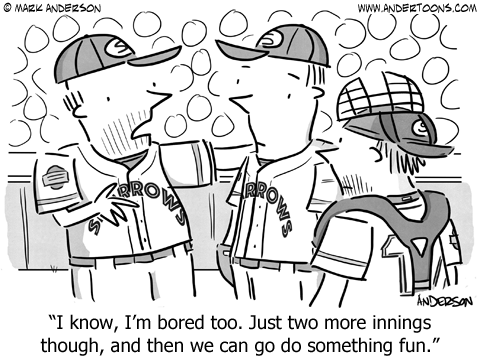
After you've settled into the workout routine, and the excitement of those first ten pounds has worn off, your challenge will be keeping yourself from plateauing. If you're getting bored with your exercise or feeling frustration that your weight has hit a plateau, don't start skipping the gym. If anything, substitute the physical activity. Go rock climbing. Take a martial arts class. Spend an afternoon kayaking with your friends. Working out doesn't have to be boring, and when you feel that fatigue, it's time to change things up a little. Plus, finding your exercise in an alternate venue will take your mind off losing weight and put you in the mood for some fun.
Cardio and Muscle
Aerobic activity is the best way to create the calorie deficit you need to lose weight, says WebMD. So focus on whatever kind of cardio you're interested in doing. Just because running or biking burns a lot of calories doesn't mean that's what you should do. So focus on cardio activities that interest you. You're more likely to keep returning to the activity if you like doing it, rather than if it feels like a chore.
Don't just concentrate on cardio, however. It's important to bring in muscle-building exercises as well. Since you're focusing on losing and maintaining weight, you don't need to spend as much time building muscle as doing cardio. Your personal trainer can help you decide how often you need to focus on muscle-building. Just remember not to leave any muscle groups out. People usually do this by training with the upper body one day and the lower body the next time. To switch it up, do your limbs during one session and your back and core during the next.
Working out isn't just about losing weight. It's about overall physical health. So, just because muscle-building exercises, like weight lifting or strength training, don't burn as many calories, that doesn't mean you should cut them out. Building muscles is good for your bones and your overall physique. Developing muscles will also help change your shape as the weight comes off. No, you won't look bulky if you lift. That bodybuilder effect takes a very specialized diet and weight-training regimen. Plus, having strong muscles makes playing a variety of sports easier, which in turn helps you burn calories.
500 Calories a Day
Losing a pound requires burning an extra 3,500 calories. Since there are 7 days in a week, this would mean losing a pound a week would require a 500 calorie daily deficit.
How long would I have to ___ to burn 500 calories?
Approximate minutes of exercise needed to burn 500 calories, by personal weight.
The exercise time columns can be sorted from high to low or low to high by clicking on a weight. All times are in minutes. You can also use this calculator to see how many calories you will burn over x minutes of exercise.
| Exercise |
100 lbs |
125 lbs |
150 lbs |
175 lbs |
200 lbs |
250 lbs |
300 lbs |
| Aerobics: low impact |
114 |
91 |
76 |
65 |
57 |
45 |
38 |
| Aerobics: high impact |
89 |
71 |
60 |
51 |
45 |
36 |
30 |
| Aerobics, Step: low impact |
89 |
71 |
60 |
51 |
45 |
36 |
30 |
| Aerobics, Step: high impact |
63 |
50 |
42 |
36 |
31 |
25 |
21 |
| Aerobics: water |
156 |
125 |
104 |
89 |
78 |
63 |
52 |
| Bicycling, Stationary: moderate |
89 |
71 |
60 |
51 |
45 |
36 |
30 |
| Bicycling, Stationary: vigorous |
60 |
48 |
40 |
34 |
30 |
24 |
20 |
| Circuit Training |
78 |
63 |
52 |
45 |
39 |
31 |
26 |
| Rowing, Stationary: moderate |
89 |
71 |
60 |
51 |
45 |
36 |
30 |
| Rowing, Stationary: vigorous |
74 |
59 |
49 |
42 |
37 |
29 |
25 |
| Ski Machine |
66 |
53 |
44 |
38 |
33 |
26 |
22 |
| Stair Stepper |
104 |
83 |
69 |
60 |
52 |
42 |
35 |
| Weight Lifting: light |
208 |
167 |
139 |
119 |
104 |
83 |
69 |
| Weight Lifting: vigorous |
104 |
83 |
69 |
60 |
52 |
42 |
35 |
| Basketball: playing a game |
78 |
63 |
52 |
45 |
39 |
31 |
26 |
| Basketball: wheelchair |
86 |
77 |
64 |
55 |
48 |
38 |
32 |
| Bicycling: BMX or mountain |
74 |
59 |
49 |
42 |
37 |
29 |
25 |
| Bicycling: 12-13.9ph |
78 |
63 |
52 |
45 |
39 |
31 |
26 |
| Bicycling: 14-15.9ph |
63 |
50 |
42 |
36 |
31 |
25 |
21 |
| Boxing: sparring |
69 |
56 |
46 |
40 |
35 |
28 |
23 |
| Football: competitive |
69 |
56 |
46 |
40 |
35 |
28 |
23 |
| Football: touch or flag |
78 |
63 |
52 |
45 |
39 |
31 |
26 |
| Frisbee |
208 |
167 |
139 |
119 |
104 |
83 |
69 |
| Golf: carrying clubs |
114 |
91 |
76 |
65 |
57 |
45 |
38 |
| Golf: using cart |
179 |
143 |
119 |
102 |
99 |
71 |
60 |
| Gymnastics |
156 |
125 |
104 |
89 |
78 |
63 |
52 |
| Handball |
52 |
42 |
35 |
30 |
26 |
21 |
17 |
| Hiking: cross-country |
104 |
83 |
69 |
60 |
52 |
42 |
35 |
| Horseback Riding |
156 |
125 |
104 |
89 |
78 |
63 |
52 |
| Ice Skating |
89 |
71 |
60 |
51 |
45 |
36 |
30 |
| Martial Arts |
63 |
50 |
42 |
36 |
31 |
25 |
21 |
| Racquetball: competitive |
63 |
50 |
42 |
36 |
31 |
25 |
21 |
| Racquetball: casual |
89 |
71 |
60 |
51 |
45 |
36 |
30 |
| Rock Climbing: ascending |
57 |
45 |
38 |
32 |
28 |
23 |
19 |
| Rock Climbing: rapelling |
78 |
63 |
52 |
45 |
39 |
31 |
26 |
| Rollerblade (inline) Skating |
89 |
171 |
60 |
51 |
45 |
36 |
30 |
| Rope Jumping |
63 |
50 |
42 |
36 |
31 |
25 |
21 |
| Running: 5ph (12min/mile) |
78 |
63 |
52 |
45 |
39 |
31 |
26 |
| Running: 5.2ph (11.5min/mile) |
69 |
56 |
46 |
40 |
35 |
28 |
23 |
| Running: 6ph (10min/mile) |
63 |
50 |
42 |
36 |
31 |
25 |
21 |
| Running: 6.7ph (9min/mile) |
57 |
45 |
38 |
32 |
28 |
23 |
19 |
| Running: 7.5ph (8min/mile) |
50 |
40 |
33 |
29 |
25 |
20 |
17 |
| Running: 8.6ph (7min/mile) |
43 |
34 |
29 |
25 |
22 |
17 |
14 |
| Running: 10ph (6min/mile) |
38 |
30 |
25 |
22 |
19 |
15 |
13 |
| Running: pushing wheelchair |
78 |
63 |
52 |
45 |
39 |
31 |
26 |
| Running: cross-country |
69 |
56 |
46 |
40 |
35 |
28 |
23 |
| Skiing: cross-country |
78 |
63 |
52 |
45 |
39 |
31 |
26 |
| Skiing: downhill |
104 |
83 |
69 |
60 |
52 |
42 |
35 |
| Snow Shoeing |
78 |
63 |
52 |
45 |
39 |
31 |
26 |
| Softball: general play |
125 |
100 |
83 |
71 |
63 |
50 |
42 |
| Swimming: general |
104 |
83 |
69 |
60 |
52 |
42 |
35 |
| Tennis: general |
89 |
71 |
60 |
51 |
45 |
36 |
30 |
| Volleyball: non-competitive |
208 |
167 |
139 |
119 |
104 |
83 |
69 |
| Volleyball: competitive |
156 |
125 |
104 |
89 |
78 |
63 |
52 |
| Volleyball: beach |
78 |
63 |
52 |
45 |
39 |
31 |
26 |
| Walk: 3.5ph (17min/mile) |
156 |
125 |
104 |
89 |
78 |
63 |
52 |
| Walk: 4ph (15min/mile) |
139 |
111 |
93 |
79 |
69 |
56 |
46 |
| Walk: 4.5ph (13min/mile) |
125 |
100 |
83 |
71 |
63 |
50 |
42 |
| Walk/Jog: jog <10min. |
104 |
83 |
69 |
60 |
52 |
42 |
35 |
| Water Skiing |
104 |
83 |
69 |
60 |
52 |
42 |
35 |
| Water Polo |
89 |
71 |
60 |
51 |
45 |
36 |
30 |
| Whitewater: rafting, kayaking |
89 |
71 |
60 |
51 |
45 |
36 |
30 |
| Exercise |
100 lbs |
125 lbs |
150 lbs |
175 lbs |
200 lbs |
250 lbs |
300 lbs |
Staying Slim Once You've Slimmed Down
Keep Track of Your Weight
When you've finally reached your goal weight and size, it can be tempting to throw your scale at the garbage and never look at it again. That scale, however, is essential to keeping the weight off once you've gone through all the hard work to lose it. While maintaining your weight, you need to be aware of how much you actually weigh. Pick a day of the week and weigh yourself every morning on that day. Write it down. This way, you're aware if you've gained any weight back and can curb it before it snowballs into anything serious.
Watching the scale will also help you calibrate your diet again. You won't be eating quite the same way when you're trying to maintain weight, since your focus isn't creating a calorie deficit but maintaining a healthy level of calories each day. Your nutritionist and personal trainer can help you with this. Even if you're going it alone, slight eating habit alterations will show up during your weekly weigh-in.
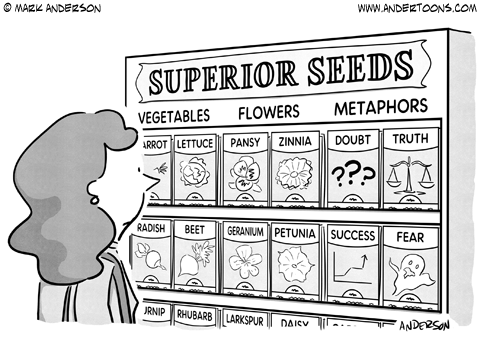
Keeping track of your weight also helps you remain aware of any bad habits that may have led to small weight gain. Did you skip the gym or partake of the donuts during a work meeting last week? While gaining a few pounds isn't a big deal, and is easily fixable, you don't want it to become more than that. At the same time, don't beat yourself up if you did gain a few pounds back because it happens to everyone, and you can do something about it. Weight management will be different from week to week, so it's important to keep up a good attitude. Feeling good about yourself and how you look will make getting on that scale every week easier.
However, don't put all of your stock in the number the scale shows. Keep in mind that muscle weighs more than fat, so you should do body fat assessments in addition to weekly weigh-ins.
There are a number of popular activity trackers like the Fitbit which can help you lose weight by automatically recording your steps & exercise activity and displaying them on an onlinine profile. People can share their data with friends and make a game of setting daily or weekly goals and competing with one another at work or in other social environments.
Eat Breakfast
At some point, you've probably heard that breakfast is the most important meal of the day. That's a very true statement, yet many people don't have either the time or the desire to eat a well-balanced meal first thing in the morning. However you feel about eggs and toast, breakfast is essential to maintaining your weight.
Firstly, your breakfast should be healthy. Grabbing a high-calorie coffee drink or a couple of donuts won't do anything for weight maintenance and will probably send you back in the other direction. Focus on sources of proteins, vitamins, and minerals. The purpose of eating a good breakfast is to provide your body with the fuel it needs to get through the day and to prevent you from experiencing cravings later in the morning before lunch.
Eggs are a fantastic source of protein, and if you're worried about cholesterol, nix the yolks. Other great breakfast foods include whole-grain oatmeal, grapefruit, wheat germ, yogurt, bananas, and tea. Coffee is fine, too, as long as you don't load it up with cream and sugar. If you're a bacon and sausage lover, try substituting turkey bacon or turkey sausage.
One breakfast staple you should probably avoid is orange juice. Most store brands contain a considerable amount of sugar. The same goes for all juices, so if juice is your drink of choice in the morning, have water instead. If you're dead-set on juice, your best bet is to squeeze it yourself, but even that doesn't have the same health benefits as eating whole fruit. When craving the taste of oranges, go for the real thing: peel one and eat the segments whole.
Keep up Physical Activity
Now that your weight is down, concentrate on becoming a more active person in general. Your activities no longer revolve around dropping inches from your waistline, but staying active and avoiding sedentary activities is a great way to keep your body healthy without constantly worrying about a weight relapse.
Pick your hobbies around their activity level. Rather than sitting around and watching television for entertainment, get an audiobook from the library and take a long walk. Stretch out your new leanness in a yoga class. Learn to build things, or get started on some of those DIY home improvement projects you've been meaning to do. Even something as simple as taking the stairs at work or parking far away from the entrance in the store parking lot adds small bits of physical activity to your daily life that add up over the course of the week.
Don't forget about the gym, either. By now, you've probably developed a pretty serious workout routine, so keep up that momentum. If you fall out of the routine, getting back into it will be harder. Your body is already used to being active, so stay where you are and take advantage of your newfound health. Keep getting in your cardio and your weight training because these things will not only help maintain your weight, they'll also ensure your health for years to come.
Altering your habits and changing your lifestyle isn't easy, but the improvements you make will last you for far longer than any fad diet or quick weight-loss fix will. If you're serious about losing weight in a healthy way and staying at your goal weight once you reach it, then focus on your lifestyle. Think of it as long-term improvement. You may not drop dozens of pounds in a week like some fad diets claim, but your body will be healthier and your lower weight will be much easier to maintain.
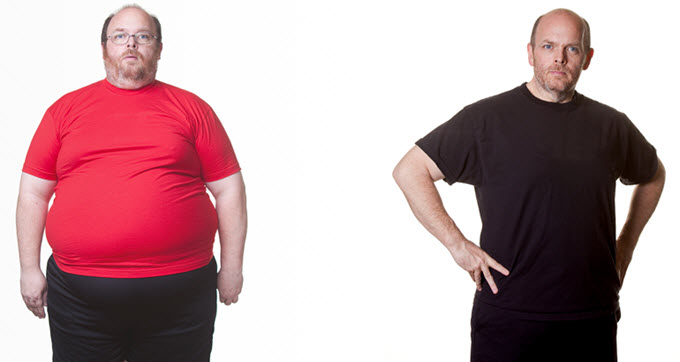
Change privacy settings
 Weight Loss Calculator by Goal Date
Weight Loss Calculator by Goal Date